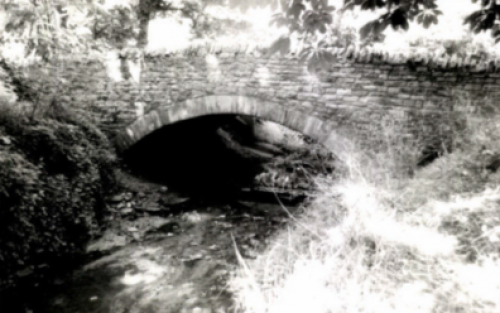Bedford Borough Local Plan 2040 Plan for Submission
(1) Appendix 5
BEDFORD BOROUGH'S NON-DESIGNATED HERITAGE ASSETS

19th century limestone bridge, Village Road, Bromham
BEDFORD BOROUGH COUNCIL
HISTORIC ENVIRONMENT
PLANNING SERVICES
1. Introduction
This appendix sets out the criteria for identifying non-designated heritage assets in Bedford borough. Non-designated heritage assets are locally or regionally significant (see archaeology exception below) buildings, structures, monuments, sites, places, areas, or landscapes which have been identified as having a degree of significance that merits consideration in planning decisions and plan making.Non-designated heritage assets will possess different levels of significance, and the higher the level of significance, the more weight it will be given in planning applications which potentially impact on that significance.
The Council intends to create a single local list of non-designated heritage assets but until such time as that is produced, a criteria-based approach will be employed on a case-by-case basis to identify such assets. Once identified, a non-designated heritage asset will be added to the Bedford Borough Historic Environment Record (if its details are not already held in the Record) and have this status recorded; being already recorded in the Record does not automatically make a building, monument, landscape etc., a non-designated heritage asset; it must be identified as such in accordance with the criteria set-out in Table 1.
2. Criteria
Non-designated heritage assets will be considered against the criteria set out in Table 1 below. Such assessments are likely to arise in the following situations: during local plan-making and making planning decisions; as part of conservation area appraisals and reviews; in reviews of data held by the Bedford Borough Historic Environment Record; or if put forward by members of the public or local groups. Non-designated heritage assets must fulfil at least two of the criteria set out below unless they comprise archaeological remains which are required to meet the Archaeological Interest criterion only. Some assets may however meet multiple criteria.
It should be noted that some archaeological sites identified as non-designated heritage assets and added to the local list will be nationally significant, but unscheduled, and will therefore need to be afforded the same consideration as scheduled monuments in planning decisions. Some nationally important sites cannot be designated as scheduled monuments because they are outside the scope of the Ancient Monuments and Archaeological Areas Act 1979 due to their physical nature, such as lithic scatters. However, the NPPF requires non-designated heritage assets of archaeological interest, which are demonstrably of equivalent significance to scheduled monuments, to be considered subject to the policies for designated heritage assets.
Table 1
|
Criteria |
Description |
|
Age and Integrity |
Structures constructed before 1840 which retain much of their original style, features, form, or construction materials and layout. If built between 1840-1919, the structure should retain most of its original external features; such as windows, doors and roof covering etc. If built after 1919, the structure should retain almost all of its original architectural features. |
|
Rarity |
Heritage assets which can be demonstrated to be rare examples locally and / or regionally. |
|
Architectural Interest |
Structures that represent well-preserved typical examples of particular architectural styles, building materials, or building form. Structures that show considerable innovation in the use of materials or techniques, or early examples of styles that subsequently became popular. High quality work by notable architects whether local or otherwise. |
|
Archaeological Interest |
Heritage assets identified as having the potential to provide evidence of past human activity. These may be in the form of below ground remains and / or in earthworks, structures, designed or historic landscapes. Please note that footnote 68 of the NPPF 2021 will apply to heritage assets with archaeological interest demonstrably equivalent in significance to a scheduled monument. |
|
Artistic Interest |
Heritage assets that demonstrate elements of creative skill including for example sculptures, paintings, decorations, advertisements, memorials, gates, and railings. |
|
Historic Interest |
Heritage assets which hold a significant association with important historic people or events. For example, former notable residents or landowners, commemorative or charity events, events and locations associated with religious or community groups. This category will not usually apply to assets associated with a living person. |
|
Designed or Historic Landscapes |
Heritage assets comprising locally or regionally important designed landscapes such as parks or gardens and assets formed through commercial, industrial, or agricultural processes. |
|
Landmark Value |
Heritage assets that hold a strong communal or historic association, hold high aesthetic value, or form part of an important view or place. |
|
Group Value |
Heritage assets that form a group with a clear visual design or historic relationship, for example terrace housing, farmyards, or estate buildings. |
3. Bibliography
Historic England, 2021. Local Heritage Listing: Identifying and Conserving Local Heritage. Historic England Advice Note 7 (2nd edition).
